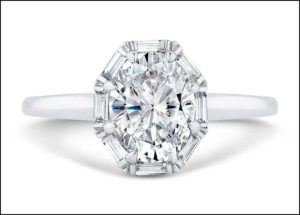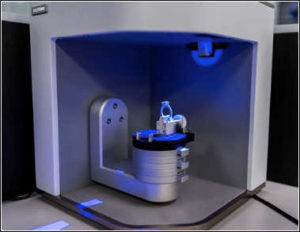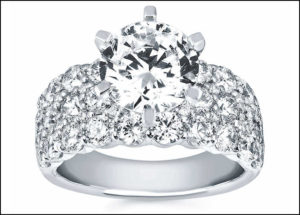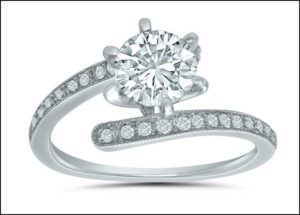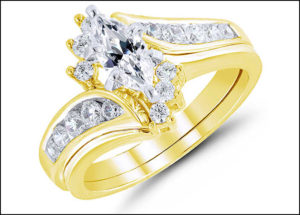Power Partnerships Produce Profits
Collaborating with manufacturers offers many benefits to retailers.
McKinsey & Company has found in its market research that retailers and suppliers that have chosen to be transparent in their partnerships, open in their strategies, generous in sharing insights and opportunities, aligned on metrics, and collaborative beyond the traditional commercial areas have gained each other’s trust and consequently outperform their peers.
McKinsey finds that forming “power partnerships” can yield meaningful growth in revenue and profit for both stakeholders. “We’ve found in our experiences that when retailers and manufacturers work together and share insights it can go a long way in developing new activities that can deliver compelling, innovative offerings,” says Dov Tannenbaum, a principle at Leo Schachter Diamonds, referenced McKinsey in a recent Plumb Club podcast on the power of partnerships between retailers and manufacturers.
Among the time and cost saving benefits of power partnerships, Tannenbaum cites access to a shared assets library of resources, including photography, videos, illustrations, and copy that can be used in store, online, digitally, or social media. He also mentions that collaborative social and digital activities can expand reach and frequency. “Working together makes it possible to develop more promotional vehicles, enhance in store and training support, and develop unique value-added offerings.”
Urmil Gajera, who is involved in every aspect of the supply chain for his company, Aneri Jewels, advocates not only power partnerships but shortening the supply chain and working with responsible suppliers. “Having a shorter supply chain strategy increases a retailer’s potential margin,” he says, “giving jewelers the ability to be price sensitive and price elastic when needed.”
Collaborating with manufacturers has many benefits for retailers, cites Tannenbaum. Among them are the ability to tap into market data and analytics; to be among the first exposed to innovation opportunities; to collaborate across the value chain on supply chain improvements that benefit both; to develop effective retailer training that drives loyalty, advocacy and purchase; and to build product and branded social channels and websites to move consumers through their journey to retail sites and stores.
With consumers’ behavior changing to purchase products online, it helps to choose jewelry manufacturers that can provide drop ship services, advises Gajera, who notes that it’s convenient for manufacturers, as they are making jewelry for confirmed orders. “That creates efficiency, thus lowering the overhead costs of holding inventory. Quality, price and flow are all consistent when working with a manufacturer closer to the source.”
Smart Retailing
In a recent article in Forbes, the business magazine’s Agency Council expert marketing panel discussed fields it believes are ripe for shopping experiences powered by augmented reality (AR), with jewelry among the top 10. “AR technology can help potential customers see what certain items would look like on them, helping better persuade them to purchase,” cites Lisa Montenegro for Digital Marketing Experts – DMX Marketing.
In fact, the State of Fashion 2021 report, by the Business of Fashion and McKinsey & Company, report brands rethinking store formats and leveraging data and analytics to predict everything from footfall (the number of people entering a store or shopping area in a given time) to manage assortments and build personalized offerings. Flagship stores, it forecasts, will be branded as discovery zones and tasked with creating emotional connections with customers.
Technology can help consumer concerns and ease purchase decisions by building confidence and demonstrating what pieces look like from various angles, and how they will look when worn, describes Brian Howard, vice president of sales and marketing for Shah Luxury in a Plumb Club podcast. In fact, the importance of these tools for retailers led Shah, a diamond bridal and custom jewelry manufacturer, to also become an IT developer.
Hologram technology today, Howard shares, offers 3D, ultra-HD, and virtual reality that brings jewelry to life. “Using a hologram machine or box, even a smart phone or tablet, customers can view, in midair, a piece from every angle, 360-degrees, and in full color. What’s more, you can change metal color or gemstone in the design as it floats before you.” He cites sales conversion rates for jewelers using the technology to be 30% to 40%.
Among the Retail Innovations The Plumb Club showcased in its pavilion at JCK Las Vegas in June were two innovative tech companies offering the latest tools to connect the digital and real worlds in the shopping experience — Picup Media and Glass Media.
Picup Media showcased its pioneering smart phone GemLightbox for jewelry and gemstones; augmented intelligence (AI)-powered jewelry image retouching tool; and AR jewelry virtual try-on software. While Glass-Media presented cutting-edge digital display elements for jewelry stores, including 3D holograms, projection-based illumination, display-based pixel mapping, digital point-of-sale displays, and other custom visual solutions that re-imagine retail.
Satisfying Customization
Personalization is a roaring trend across all areas of retail and it’s no longer just for the top end of the market. Consumers today want to personalize experiences and purchases. Retailers and manufacturers are catering to this new generation of shoppers by letting them modify and visualize their unique versions of what they’re purchasing — from clothing and sunglasses to furniture and wall tiles.
There have been huge changes in retail in the last decade, and the jewelry industry is experiencing major shifts in how consumers research, shop, and purchase fine jewelry.
“Selling engagement rings in particular is a completely different experience than it was just a few years ago,” says Jeff Levitt, vice president of merchandise at Cynergy Trading Corp in a recent Plumb Club podcast discussing the expectations of engagement ring shoppers and how to meet them. The leading diamond manufacturer and Plumb Club member specializes in private label design, product customization, and just-in-time manufacturing of special orders.
For many shoppers, choosing a complete ready-to-go engagement ring might feel too cookie cutter. They want to feel personally involved in the design process to whatever extent they’re comfortable. Some may want to start working from sketches; others might want to assemble the ring from parts, and still others may start with a style they like and see how it looks with different options applied.
Jonathan Goldman, CEO of Frederick Goldman concurs: “We are constantly listening to our retailers and analyzing market trends and the message is clear: today’s bridal consumer wants the ability to customize their jewelry in some way, and ‘custom’ can mean different things to different consumers.”
While some retailers may have an in-house designer, CAD person, or model maker, Levitt advocates jewelers partner with their jewelry and IT vendors to tap into all the tools available. Retailers who work with suppliers who provide these services are better poised to make a sale and build long-term loyal customers.
From a manufacturing and supplier perspective, Levitt mentions a few technological innovations that have made it easier to satisfy consumer desires in jewelry design — notably CAD modeling and rendering, try-on applications in sales presentations, and the development of builder or configurator applications.
The Plumb Club includes leading diamond bridal and jewelry manufacturers that offer custom design services to their retail partners, including Cynergy Trading, Frederick Goldman, Novell Global, Original Design Inc (ODI), A.Jaffe, Ostbye, and Shah Luxury.
Jeff Weinman senior vice president of ODI/Original Designs in a recent Plumb Club podcast cheered CAD and 3D printing the most important technological advancements for the jewelry industry. “With CAD and 3D printing, one has the ability to make unlimited changes quickly and at minimal cost, even with the most complex of designs, resulting in precise and beautiful jewelry. The technology allows jewelers to say, ‘yes’ to their customers’ desires.”
Manufacturers like Cynergy and Frederick Goldman offer configurator or builder app that make it possible to take different options, images and videos, and combine them in a user-friendly application that retailers can install on their website. Depending on the way it was designed it might have customers pick a diamond then search for a ring. Or build a ring step-by-step, selecting shank then head style, center shape and size, side stones and other details. Or begin with a finished ring and what it would look like applying different options.






